‘Maha’ DeshMart is a large (fictional) supermarket chain with a pan-India presence. Amit Paranjape, our resident expert on Supply Chain Management, discusses some of their management strategies and best practices. Special emphasis is put on the importance of ‘Information Technology’ and how it enables ‘Maha’ DeshMart to run one of the most efficient Supply Chain & Operations. Benchmarking is also done with global industry leaders such as Wal-Mart. 2008 represented a challenging year and we will take a look at how specific Supply Chain Processes and the other aspects of Retail Operations react to the global economic challenges, and can still deliver on the overall goals and objectives of the company. This fictional story about the fictional ‘Maha’ DeshMart is in continuation to our series of articles on Supply Chain Management.
‘Maha’ DeshMart
‘Maha’ DeshMart as the name suggests stands for everything ‘large’ (‘Maha’ in Hindi / Marathi / Sanskrit = ‘Large’ or Huge’). Some say ‘Maha’ also stands for ‘Maharashtra’ the home state of the founder, Raj Deshpande. ‘Desh’ comes from the founder’s last name. This chain is also often referred to as simply ‘DeshMart’. Ever since opening its first store in Pune about 15 years back, it has gone through a rapid expansion and now had a presence in every major Tier 1 and Tier 2 city in India, with aggressive plans to expand to Tier 3 cities as well. DeshMart’s vision is to be the most preferred shopping destination for the Indian consumer; period. To achieve this, they want to have the widest choices, the best prices, and the most comfortable shopping experience for their consumers.
It is no secret that the DeshMart founder was inspired by world leader in retail, Wal-Mart, and its philosophy of scale and constantly driving down costs. The Wal-Mart business model is actively pursued here in their Pune headquarters, as well as in all their stores and throughout their supply chain. The management team though has taken a series of strategic decisions to ‘Indianize’ the model to suit the local context. For example, while ‘ELDP’ (Every Day Low Prices, as opposed to Promotions) was the generally preferred strategy, some key exceptions were made based on local preferences. The other one is to enshrine a ‘Neighborhood Kirana Store’ owner type mentality into the Store Manager and his team. In India, the small neighborhood ‘Kirana’ (or grocery) store is run by a family with the patriarch serving as the CEO, Head of Operations, and all other roles combined. The rest of family fills up various other support roles. One thing this model provides is an ‘amazing’ ownership of the business and the consumer. DeshMart wanted its Store Managers to think and act, like the Kirana Store Owner. Metrics have been suitably adjusted to encourage the right behavior; however the core difference has been through intense focus on Hiring & Recruitment. Extraordinary importance is put on finding the right talent for these critical positions.
The Importance of Information Technology
Another key Wal-Mart strategy that has been espoused by DeshMart is focus on Information Technology. At DeshMart, IT is considered to be one of their biggest strategic differentiators. They don’t want to rely on any one or even a few different application software vendors for their business process applications. Instead, they have followed the example of Wal-Mart, Dell, FedEx, and Toyota and have taken complete ownership of their IT Applications & Infrastructure. These great companies have supported their unique business processes by designing and developing their own IT solutions where necessary. Here again, DeshMart put lot of emphasis on hiring the right CIO (Chief Information Officer). In fact in the early 1990s, when this position was virtually unknown in India and in many other places around the world – they had a CIO and his senior team in place.
The IT Department’s mission is to deliver the requisite data and decision making capabilities at the disposal of every DeshMart employee throughout the organization, in order to deliver on the overall goals & objectives of the company. Organizationally, IT was aligned along with the business process teams in such a way that for every project there was no ‘IT vs. Business’ division. The combined team had the singular goal to achieve the necessary process improvement metric.
The 2008 Global Economic Slowdown
The 2008 Global Economic Slowdown was not predicted by even the top experts on Wall Street. Thus, even the best of the supply chain leaders didn’t have any ability to accurately forecast the impending shortfall in demand. The only way for a company to react to something like this was through some rapid adjustments to their plans, and execute as efficiently as possible. The first signs of the slowdown were visible too late for planning the 2008 season. In the following sections, we will look at how DeshMart’s IT and Business Processes reacted to this challenge.
Merchandizing & Assortment Planning
Let us take a step back here and understand how large multi-product category retailers worldwide do their long term planning. For many retailers, especially for those heavily weighted towards fashion segment, the holiday season (last 5-6 weeks of the year, in the US – from Thanksgiving weekend to Christmas/New Year) could account for anywhere from 20% to even 50% of their annual revenues. In India, the holiday season traditionally runs from Diwali (The Festival of Lights), in October/November to the December End wedding season. Similar holiday season spikes are also observed in the Indian market.
To react to this end of the year demand, retailers start planning a year in advance. The overall merchandizing decisions (deciding what products to buy and position in the stores) are the first step. This process is called as ‘Merchandize Planning’. A ‘top down view’ is often a starting point, where a revenue forecast is broken down across different product groups (commonly referred to as ‘categories’) and then finally to the individual product (e.g. a pair of pants). Similarly, a geographic top down view is taken where the global revenue number is broken down by regions and eventually down to the store level. A ‘bottom up’ view can be taken based on actual product level forecasts. Often times, ‘middle-out’ view is also done at one of the intermediate points in the hierarchies. All these views are synchronized closely before arriving at final numbers and targets. This process sounds straight forward, but is complicated by the sheer size of the retail problem. Imagine doing these aggregations for 100,000 products! (A typical Wal-Mart stocks well over 200,000 products). Now add the store dimension (Major US chains have 1000s of stores), and you will get the idea of the scale problem. As a result, merchandize planning drives some challenging scalability requirements for databases and servers.
Table 1: Retail SCM & Operations – Business Processes & IT Drivers
| Business Process |
Focus |
Key IT Drivers |
| Merchandise Planning |
Selecting the right products to purchase for the season/year, based on corporate objectives and setting sales targets Scalability |
Multi-level aggregation/dis-aggregation |
| Assortment Planning |
Grouping stores based on similar characteristics. Selecting what store groups have what products |
Optimization Algorithms for identifying the right store groups (clusters). |
| Transportation Planning & Logistics |
Delivering the product to the stores while minimizing transportation cost. |
Transaction Management for handling large volume of shipment orders
Optimization Algorithms for truck load building and route planning |
| Replenishment & Inventory Management |
Getting the right amount of the product to the store, while minimizing excesses and reducing out of stocks situations |
Scalability
‘Fast’ algorithms for calculating replenishments and inventory targets |
| Store Operations |
Presenting the products appropriately
Collecting POS data
Managing customer loyalty |
Scalability POS Data Collection Systems
Business Intelligence & Data Mining
Algorithms for ‘Planograms’ |
In case of DeshMart, the problem is not as massive as Wal-Mart, but still quite big. At present, DeshMart has over 500 stores with anywhere from 10,000 to 50,000 products in a given store. Initially, at the beginning of the year, they had done the merchandize planning assuming a specific forecast value for the end of the year period. Now, they need to alter it, and propagate it down the hierarchy. This adjusts the forecast for individual products. This will in turn affect the purchasing decisions. In some cases (as it turned in DeshMart’s case…) it is too late to do this, since long lead time items are already on order. In such cases, various promotions/ discounting strategies are worked out to push the excess merchandize out. Note that given DeshMart’s unique customer loyalty and cost advantages, a down market can also be an opportunity. For example, Wal-Mart actually had more sales compared to previous quarters in the 2008 slowdown since the cost conscious consumer from other competing stores increasingly moved their shopping to Wal-Mart. Hence while adjusting the merchandize, DeshMart also considered this aspect as an input.
Once the product level forecast is available, the next challenge in a multi-store retail environment is deciding what stores carry what products. Not all DeshMart stores are the same. They differ by types of cities, as well as location of stores within cities. The typical product mix of a store in Central Deccan Gymkhana area of Pune is different from that in the Hadapsar suburb. A Mumbai store would differ in its product selection than say, a store in Indore. These product selections are referred to as ‘Assortments’ and planning them is called as ‘Assortment Planning’. Here too, scale is a big issue. Various algorithms are used to group stores based on their commonalities into groups or ‘clusters’. Then assortment decisions are made at the cluster level.
When the economic down turn hit, not only did the merchandizing decisions change, but also certain assortments by stores. To give an example stores in up market areas were now stocked with certain products normally allocated to more middle income areas. DeshMart was able to make these changes quickly by redoing certain clustering and changing allocations.
In both merchandizing and assortment planning IT plays a key role in providing the planners with a key capability to make fast and accurate decisions, while dealing with a huge amount of data. Handling large volumes of data, large scale aggregations and dis-aggregations, scenario planning & what-ifs are also important IT requirements for these business processes.
Logistics & Transportation
If ‘Supply Chain Management‘ is loosely defined as ‘Getting the right product at the right place, at the right time’; then ‘Logistics & Transportation’ is one of the core execution pillars of realizing this. Logistics deals with the overall handling, distribution and shipment of products through the supply chain, while transportation is focused more on the physical shipment of goods and products. In a sense transportation can be considered as a subset of logistics, but often times these two terms are used interchangeably.
For large global retailers, the transportation problem typically begins at their warehouses. Product manufacturers are responsible for shipping material into these warehouses. (Note there are some exceptions such as Vendor Managed Inventory & Direct Store Shipments, but we will not discuss those here…).
The primary goal of efficient logistics & transportation planning is to get the product to the store at the right time, while minimizing cost. Warehouse management – ensuring smooth and efficient inflow and outflow of products is the first step. One relatively new technology that is being used in some places is ‘RFID’ (Radio Frequency ID). These are small tags (like a semiconductor chip) that are attached to stocking pallets, cases or other products that need tracking. A radio frequency based reader then ‘reads’ from this tag. This helps in easy tracking, sorting and distribution of products in a warehouse, while minimizing manual intervention. Some of these warehouses span many acres and have 1000s of pallets, miles of conveyor belt and typically handle over 100,000 individual products. Hence automated tracking is very important. RFID systems also need efficient large scale data acquisition and storage systems to handle this high volume data.
Truck load planning and truck routing are two important pieces of transportation planning. The challenge in truck load planning is filling up the truck to a full truck load with multiple products, while minimizing excessive shipments to the store (Note – It is always easy to ship a full truck load, if ‘stuffing’ it with unnecessary excess stuff is allowed…). The challenge comes in when this restriction of not shipping too much excess products comes in. Remember, excess product takes up excess space, as well as locks-up excess capital. This is bad for the overall financial performance. Various optimization based approaches that trade-off between cost of shipping early, vs. sending partial truck loads (thus trading off between excess inventory carrying costs vs. excess transportation costs…) are used to figure out the right loading mix inside a truck. In case full truck loads are not possible, then smaller shipments are loaded in, to be delivered to different destinations (typically different stores). This is called as ‘LTL Shipments’ (LTL = Less Than Truck Load). Here the challenge is to come up with a efficient truck route so as to minimize the distance traveled.
Hence if the DeshMart warehouse in Vashi, New Mumbai is shipping LTL shipments to the suburban stores in Bandra, Andheri and Mulund, the optimized route could consist of Vashi-Mulund-Andheri-Bandra. This seems relatively straight forward, but there are a lot of other constraints in the real world. There are some loading constraints, precedence constraints, traffic constraints, regulatory constraints that can influence the most optimal route on a map. Also, for a large retailer like Wal-Mart this process has to be done for 1000s of trucks every day. The IT systems have to deal with managing these whole sets of transactions as well as the decision making processes. They need efficient data integration with the IT systems of external logistics providers as well as suppliers.
In DeshMart’s case, there are also a series of local constraints that are peculiar to the Indian market. Shipping times in India can be fairly non-standard as compared to that in the US. Most truck operators are not organized into big companies. Regulatory requirements like Octroi (a local city tax) can add delays to the process. Enforcement of driving standards/time can also be a problem. Hence similar to Wal-Mart, DeshMart had made a strategic decision to own a private fleet of trucks for their transportation needs. This enables them with greater control over the whole process.
As we saw earlier, the impact of the economic slowdown led to last minute adjustments in assortments. Such changes, as well as those coming from sudden surges in demand can be better handled with a private fleet. DeshMart’s trucks also use the latest GPS based navigation and logging technology that enable the logistics master controller to keep exact track of each shipment in real time.
IT enabled dynamic logistics & transportation business processes helped DeshMart to better respond to the challenges of the ‘real’, ‘unplanned’ world, while keeping transportation costs at minimum.
Store Level Replenishment & Inventory Management
Store Level Replenishment & Inventory Management deals with calculating the right levels of products that are maintained at the individual stores. Too few and you run the risk of running out of stock, often resulting in lost sales and unhappy customers. Too many, and you take up excess space as well as occupy excess working capital.
Specialized replenishment and inventory management IT systems can react to daily fluctuations in the demand signals and pre-calculated forecasts at the store level and identify the right quantity of each product that needs to be shipped to the store. A variety of algorithms are used to do this, and like all other retail problems – scale is a big challenge. Imagine planning 100,000 products across 1,000 stores. The number of products-stores combination goes into millions! Now consider that this planning has to be done for the forecasted demand for the time horizon of next 2 weeks. Each day represents a new demand entry. Thus this further increases the problem size by an order of 14!
Daily demand fluctuations are usually computed based on ‘POS’ (Point-Of-Sale’) data. This data is often directly generated at the systems at the point where the sale takes place (e.g. cash register). POS Systems collect validate and transfer this data to the Replenishment System.
Through efficient store replenishment, DeshMart can make sure that they have the right product at the store, while keeping their costs low. The same cannot be said about their competitors! In fact, walk into any retail store today in India, and chances are you would find many of your preferred items to be out of stock. This goes a long way in generating the customer loyalty that DeshMart has been able to create over the years. What many of the new retail chains don’t seem to realize today (and what some ‘Neighborhood Kirana Stores’ do very well…) is that it is not the fancy layouts, air-conditioning, jazzy promotional material, etc. that attracts the customers! It is being repeatable and consistent and always having the fast moving goods in stock at all times – this is what the customer ultimately cares about!
Store Operations
Store Operations for DeshMart represents a great challenge and a terrific opportunity. Store operations in India can be quite different from that seen in the US or other developed countries. To start with, the store footprints are much smaller. The assortments are also smaller, but there is a lot of localization. For example, a large percentage of the assortment of a store in Chennai will differ from that in New Delhi. Managing store layouts and displays and locating the right stuff in the front, at the end aisles is very important. DeshMart uses CAD like software capabilities to do ‘Planograms’ (Planograms refer to the designing of products placement on the various shelves, while accounting for display priorities as well as the products’ volume dimensions). A fairly unique service in India is ‘home delivery’ service, provided by many grocery retailers. Ordering is either done over the phone or in person. A store level order entry and tracking system captures the order and coordinates the home delivery. DeshMart will be the first retailer in India to launch a completely web-based & call-center based ordering system, starting early next year. Here the order will be accepted and promised centrally and delivered from a central warehouse or a nearby store. This ‘hybrid’ web and brick and mortar model will be fairly unique not only in India but globally as well.
Customer loyalty is key for DeshMart. They have implemented a sophisticated customer loyalty program. A unique card/id number is assigned to a customer and rewards are given based on amount of purchase, as well as other special criteria. DeshMart collects, analyzes and mines customer buying preferences in their centralized business intelligence system and comes up with pricing and product placement strategies. Customer specific targeted emails and other specials are also managed through this system. For example, DeshMart’s data mining system can literally predict what special brand hair oil Mrs. Shah from Ahmadabad is likely to buy and at what frequency – and automatically send specials (or alerts) for the same!
All these entire store-centric systems ensured that even when the consumer spending all over India was going down, DeshMart still had their loyal customer continue to find and spend on the right product mix at their stores.
Conclusions and lessons learnt
In retrospect, the 2008 economic slowdown turned out to be a blessing in disguise for DeshMart. Through their superior business processes, management teams, and IT systems – they were able to not only react effectively to the changing market dynamics; they were also able to grab even higher market share. This same slowdown saw big troubles for many of DeshMart’s competitors, some of which like ‘Bharat Bears Mart’ actually went out of business.
Raj Deshpande reflects on this ‘interesting year’ and ponders how these 3 basic principles go a long way for his business success:
- Focus on the customer – learn from the neighborhood Kirana Store.
- Focus on costs at all costs – learn from the world leader, Wal-Mart.
- Focus on leveraging IT for business – learn from industry leaders.
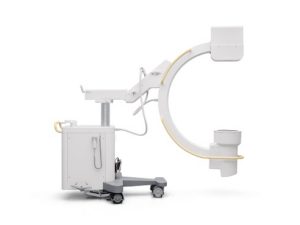
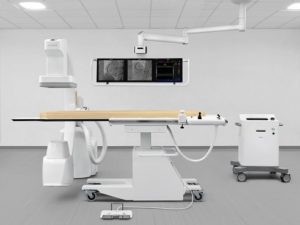
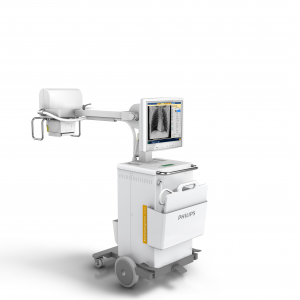

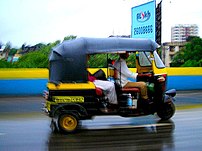
![Reblog this post [with Zemanta]](http://img.zemanta.com/reblog_b.png?x-id=4608fc72-dcb8-4511-9b86-967d13574a92)
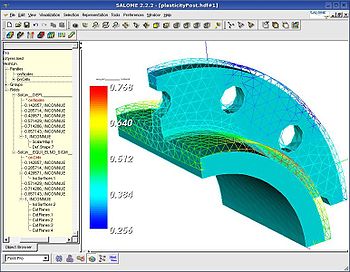

![Reblog this post [with Zemanta]](http://img.zemanta.com/reblog_b.png?x-id=500333de-e95f-4c59-b0ac-fd2d0abd18ba)

![Reblog this post [with Zemanta]](http://img.zemanta.com/reblog_b.png?x-id=031cdc05-fa64-44f6-b50b-20202cea10eb)
![Reblog this post [with Zemanta]](http://img.zemanta.com/reblog_b.png?x-id=d5a8b49b-d666-4197-aaf8-2a6c1f302135)

